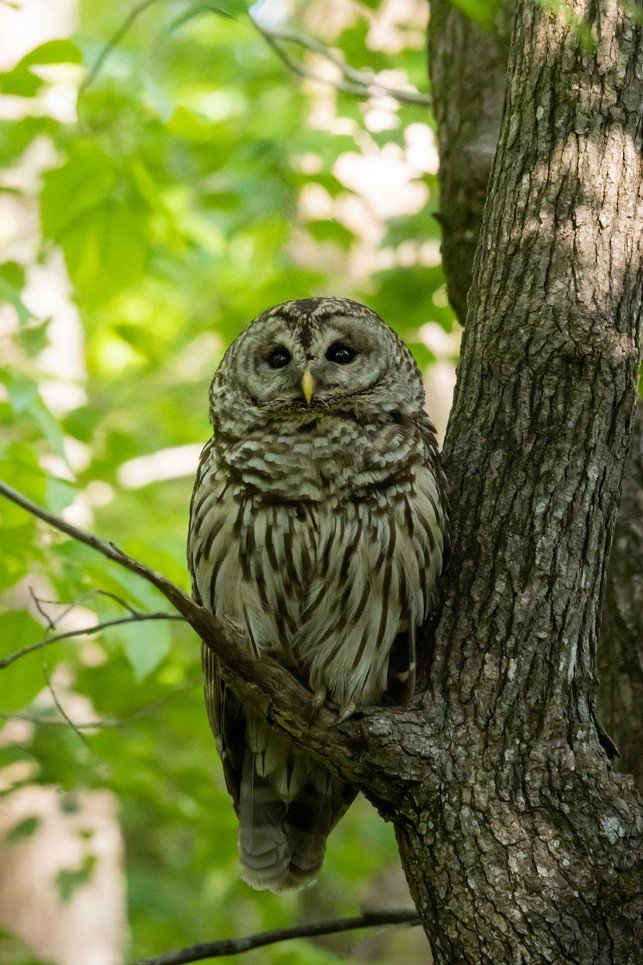Unveiling the Eclectic Palate of Owls: Types of Prey Consumed by these Nighttime Hunters
Category : Owl diet and feeding habits | Sub Category : Types of prey consumed by owls Posted on 2023-07-07 21:24:53

Unveiling the Eclectic Palate of Owls: Types of Prey Consumed by these Nighttime Hunters
Introduction:
Few creatures are as captivating as owls. These nocturnal birds of prey have captured our imaginations for centuries. We'll explore the various types of prey consumed by these feathered hunters in this post, and we'll also discuss what fuels these majestic creatures.
1 The main course is about rodents.
One can't discuss owl prey without mentioning their appetite for rodents. A significant portion of an owl's diet is made up of furry creatures. Owls have extraordinary hunting abilities and rely on their hearing and vision to locate their prey. owls swoop down with great precision, capturing their quarry with sharp talons Rodents provide owls with a consistent source of food, making them a staple in their diet across different owl species.
2 Birds are a feathery delight.
owls include a variety of birds in their diet, contrary to popular belief. Smaller owl species, such as the screech owl and the northern owl, feed on sparrows and other small songbirds. The great horned owl and the eagle owl are two species of owls that can snatch larger birds. Birds are an occasional but important addition to their menu because of owls' silent flight and exceptional camouflage skills.
3 A Diverse Diet is a collection of insects, reptiles, and Amphibians.
owls have a diverse palate that includes insects, reptiles and amphibians. The elf owl and the western screech owl rely on insects for their sustenance. The burrowing owl has developed a specific hunting technique that captures insects emerging from their underground habitats. The range of prey Owls can consume is expanded by eating lizards and snakes, as well as frog and toads.
4 A specialized diet for fish.
Some owl species have specialized in hunting fish. The fishing owl, which is found mostly in Africa and parts of Asia, has adapted to its aquatic environment by using long talons and sharp beaks to dive into water bodies and snatch fish. This behavior sets fishing owls apart from land-based owls, showcasing the diversity in owl feeding habits.
Conclusion
The hunting prowess and diet of the owls allow them to thrive in many different environments. These nighttime hunters have an eclectic palate that has helped them survive and flourish around the globe. Next time you hear an owl's call, remember the diverse array of prey it may consume to sustain its existence, a testament to the intricate web of life that surrounds us.
Leave a Comment:
SEARCH
Recent News
- Zurich, Switzerland is not only known for its picturesque landscapes and vibrant culture but also for its diverse wildlife. While the city may be more commonly associated with its financial sector and luxury shopping, there are some rare and fascinating animals that call Zurich home.
- YouTube Content Creation: Showcasing Rare Animals through Translation
- If you are a nature enthusiast and love learning about rare and exotic animals, there are several YouTube channels dedicated to showcasing these fascinating creatures in their natural habitats. These channels provide a unique opportunity to educate yourself about lesser-known species and the importance of conservation efforts.
- The Importance of Developing Rare Skills Like a Rare Animal in the Workplace
- Women in Politics: Breaking Barriers and Making History
- Warsaw, the capital city of Poland, is not only known for its rich history and beautiful architecture but also for its unique and diverse wildlife. Despite being a bustling urban center, Warsaw is home to some rare and fascinating animals that can be found in various parks, forests, and reserves in and around the city.
- Vietnam is a country known for its rich culture, beautiful landscapes, and delicious cuisine. However, it is also home to a variety of rare and endangered animals that are found nowhere else in the world. In recent years, some Vietnamese businesses and companies have taken initiatives to help protect these precious species and their habitats.
- Vienna, the capital city of Austria, is known for its rich history, stunning architecture, and vibrant cultural scene. But did you know that Vienna is also home to a variety of rare and interesting animals? From exotic species at the Vienna Zoo to elusive wildlife in the surrounding countryside, there are plenty of fascinating creatures to discover in and around this beautiful city.
READ MORE
3 weeks ago Category : owlo

Zurich, Switzerland is not only known for its picturesque landscapes and vibrant culture but also for its diverse wildlife. While the city may be more commonly associated with its financial sector and luxury shopping, there are some rare and fascinating animals that call Zurich home.
Read More →3 weeks ago Category : owlo

YouTube Content Creation: Showcasing Rare Animals through Translation
Read More →3 weeks ago Category : owlo

If you are a nature enthusiast and love learning about rare and exotic animals, there are several YouTube channels dedicated to showcasing these fascinating creatures in their natural habitats. These channels provide a unique opportunity to educate yourself about lesser-known species and the importance of conservation efforts.
Read More →3 weeks ago Category : owlo
